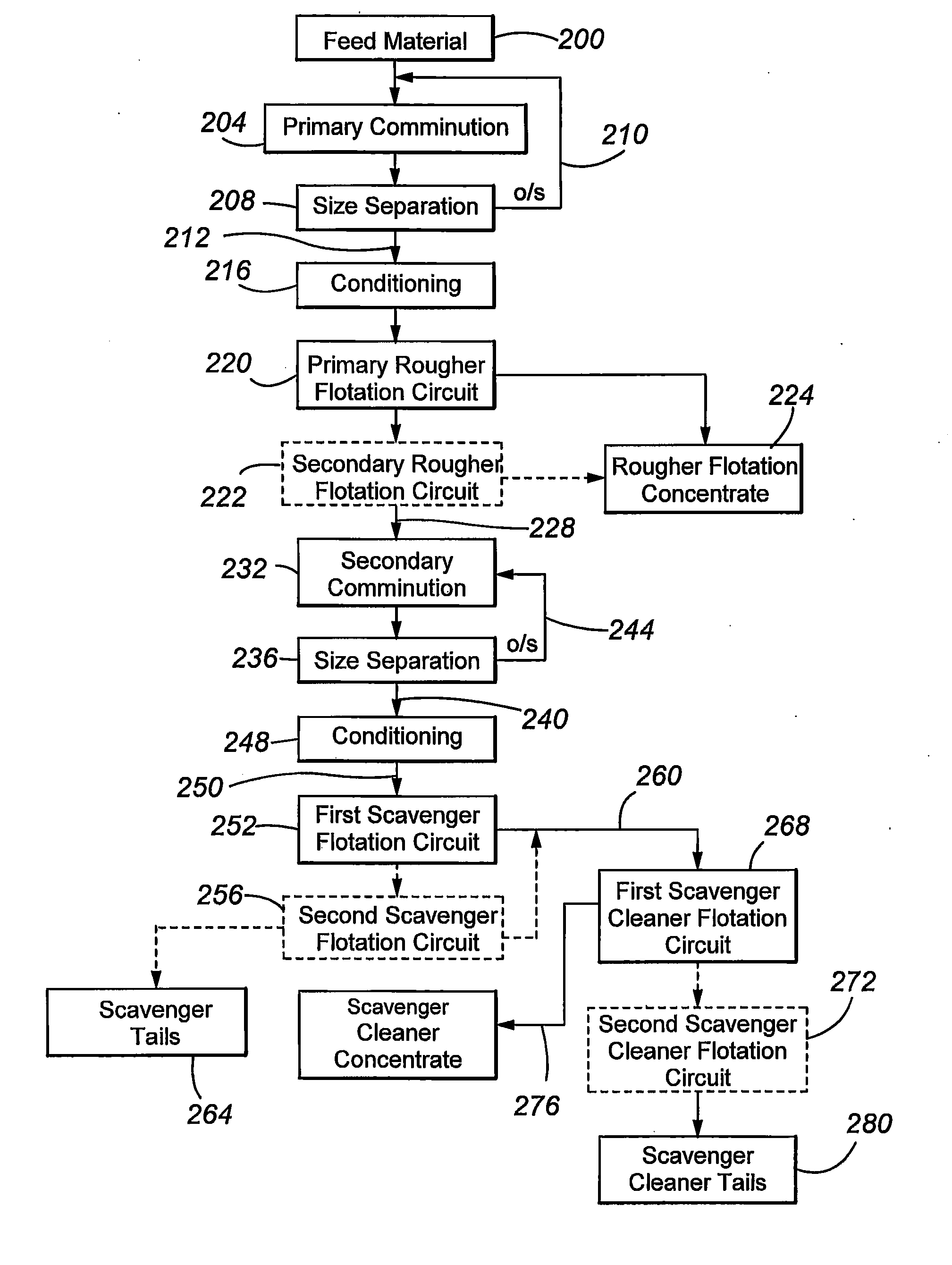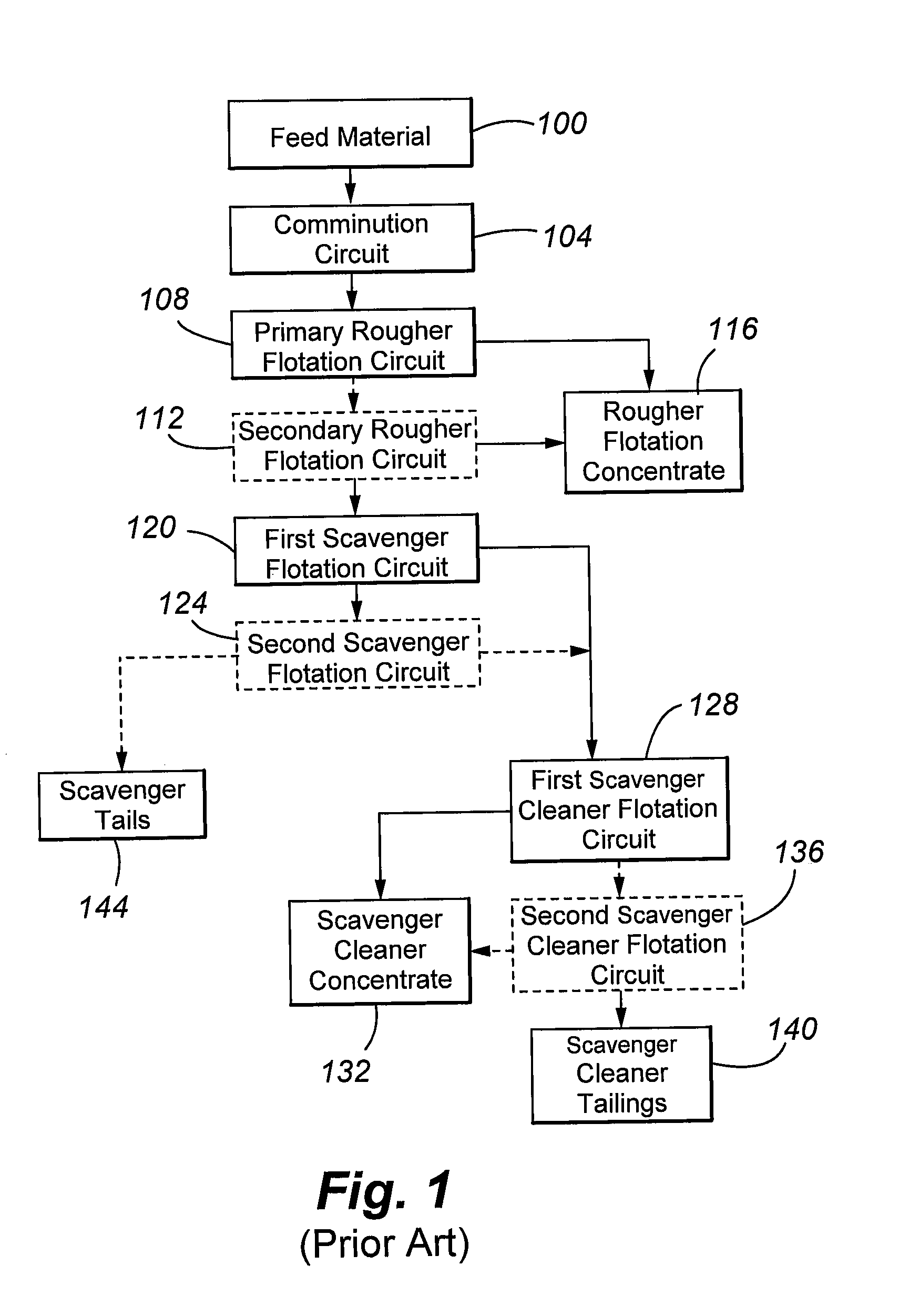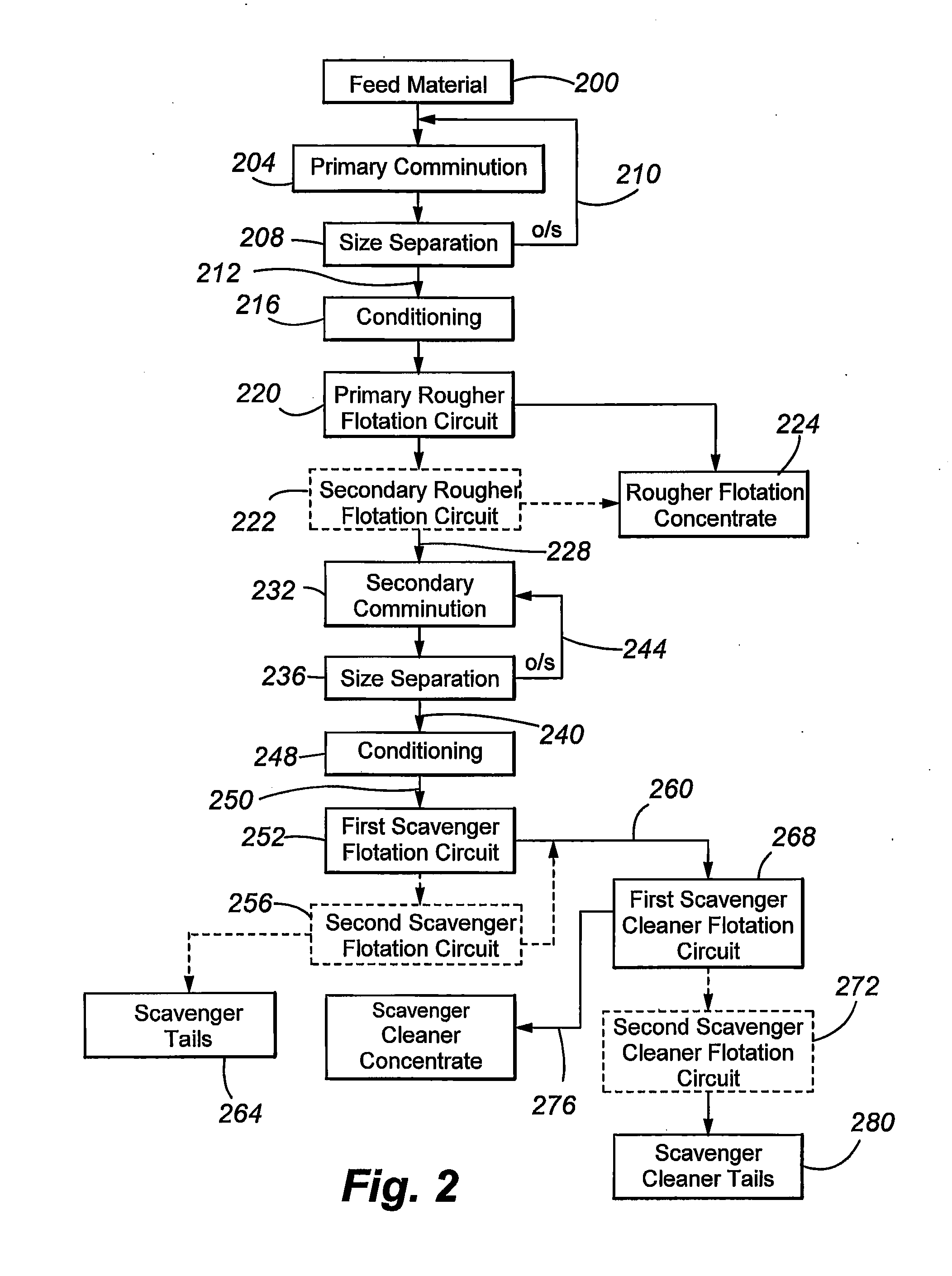Process for recovering gold and silver from refractory ores
a technology of refractory gold and silver, which is applied in the field of gold and silver recovery, can solve the problems of ineffective gold recovery from many ores by cyanide leaching, 30 percent of the gold content of the ore being removed, and difficult flotation of refractory gold-bearing sulfide ores, etc., and achieves high gold and/or silver recovery, effective selective flotation, and more robust flotation process
- Summary
- Abstract
- Description
- Claims
- Application Information
AI Technical Summary
Benefits of technology
Problems solved by technology
Method used
Image
Examples
Embodiment Construction
Process Overview
[0034]The present invention can provide a gold and / or silver concentration process that is particularly applicable to refractory and double refractory gold and silver-bearing sulfide materials. A common refractory material includes about 0.1 wt. % or more sulfide sulfur and even more preferably from about 0.5 to about 15 wt. % sulfide sulfur, about 0.05 oz / tonne or more and even more commonly from about 0.2 to about 2.0 oz / tonne gold, about 1 oz / tonne or more and even more commonly from about 1 to about 5 oz / tonne silver, and from about 0.3 to about 10 wt. % organic carbonaceous materials (which may be preg robbing). The material commonly has no more than about 1 oz / tonne platinum group metals. Sulfide minerals in material 200 commonly include pyrite, marcasite, arsenopyrite, and chalcopyrite.
The MCF2 Process
[0035]An embodiment of the MCF2 process will now be described with reference to FIG. 2. The feed material 200 can be any suitable gold and / or silver-containing m...
PUM
| Property | Measurement | Unit |
|---|---|---|
| size | aaaaa | aaaaa |
| size distribution | aaaaa | aaaaa |
| pH | aaaaa | aaaaa |
Abstract
Description
Claims
Application Information
 Login to View More
Login to View More - R&D
- Intellectual Property
- Life Sciences
- Materials
- Tech Scout
- Unparalleled Data Quality
- Higher Quality Content
- 60% Fewer Hallucinations
Browse by: Latest US Patents, China's latest patents, Technical Efficacy Thesaurus, Application Domain, Technology Topic, Popular Technical Reports.
© 2025 PatSnap. All rights reserved.Legal|Privacy policy|Modern Slavery Act Transparency Statement|Sitemap|About US| Contact US: help@patsnap.com



